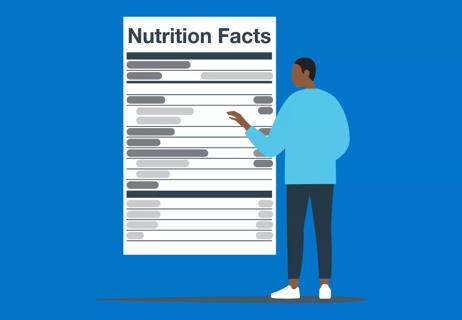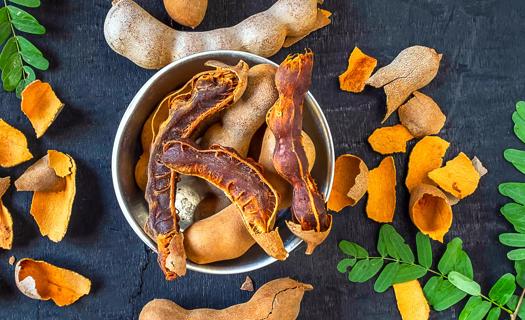Advertisement
Here's the nutritional lowdown on these tasty additions to your diet

The peanut butter you remember from childhood has stiff competition these days from creamy spreads that are ground from a variety of nuts, seeds and other legumes. And that’s a good thing! These spreads can add variety to your healthy diet. Plus, they aren’t just for sandwiches. They’re tasty dips for fruits and vegetables too.
Advertisement
Cleveland Clinic is a non-profit academic medical center. Advertising on our site helps support our mission. We do not endorse non-Cleveland Clinic products or services. Policy
But not all these spreads are equal, nutritionally speaking. Some of these are rock stars, while others are nutritionally lacking, heavily processed or loaded with sugar, bad fats and calories.
We talked to dietitian Ryanne Lachman, RDN, LD, about the many varieties of nut butters and their alternatives you now see at the grocery store to find out which are worth trying and which ones you should avoid. Here’s what she had to say.
Almond butter is a great choice if you’re looking to broaden your taste horizons past peanut butter. Almond butter tastes great and is similar in texture and thickness to peanut butter. The good news nutritionally is that almond butter has about 3 grams more of heart-healthy monounsaturated fat per serving than peanut butter. Plus, unlike processed regular peanut butter, almond butter usually is lower in sugar and provides a little extra calcium, about 60 mg per tablespoon. Look for brands with a single ingredient: roasted almonds.
Advertisement
While cashew butter is somewhat lower in fat and protein than peanut butter, it can be a little higher in sugar if sugar is an added ingredient. As with all nut butters, look for varieties with only nuts as the ingredients ― that means no added oils, salt or sugar. Cashew butter can be a healthy option, especially if you’re avoiding legumes like peanuts or soybeans. Bonus, you’ll get about 10% of your daily iron in two tablespoons. However, be mindful of your portion size, since nuts like cashews are high in fat and calories.
Because of its high fat content and relatively low amount of protein, coconut butter is not a nutritional standout on our list. And, despite the recent craze for coconut oil or butter, there is only limited research on any special health benefits. Coconut butter is best viewed as an occasional indulgence, such as an ingredient in desserts or snacks. Fun fact: While the Food and Drug Administration classifies coconut as a tree nut, a coconut is not a true nut. Botanically speaking, a coconut is a drupe, a fruit in which an outer fleshy part surrounds a pit of hardened endocarp with a seed inside.
Traditional, full-fat, shelf-stable peanut butter like the kind you (and everyone else) ate as a kid is higher in sugar than other nut butters. The fat that’s in today’s full-fat peanut butter (now that the U.S. FDA has mandated manufacturers eliminate trans fats from foods) is mostly healthy unsaturated fat. It’s best to buy a peanut butter that’s just peanuts and salt, without added palm or other oils. Even though this (technically legume) nut butter is often the cheapest, it’s smarter to choose a variety and enjoy the health benefits of other options too!
Advertisement
While almond butter, tahini and natural peanut butter may be good additions to your daily diet, take care with this trendy spread. While delicious, hazelnut spreads can contain a good deal of sugar ― some of the most popular add chocolate flavoring too. Be sure to read the nutrition label for sugar and fat (usually palm oil) content. Hazelnut spreads should be treated like rich, calorie-laden desserts ― eat them sparingly.
If you want a peanut spread, this is the best choice: Pure peanut butter – with nothing else but peanuts (or perhaps salt) on the label’s ingredients list. Avoid brands with added sugars, fats, salt, preservatives and chocolate. Don’t bother with low-fat peanut butter. The calories are the same or higher, thanks to the extra ingredients ― usually sugar ― that manufacturers add to improve the taste after taking out the fat. Natural peanut butter brands have about half as much sugar as traditional peanut butter ― and the natural, healthy monosaturated fat helps you to feel satisfied and full.
Soy nut butter can be a good option for those with tree nut or peanut allergies. This spread also can be a good choice for your kids’ lunch if their school or lunchroom is peanut-free. Made with lightly roasted soy nuts, soy nut butter is quite similar to peanut butter in taste and texture but has significantly less total and saturated fat. Soy nut butter offers 7 grams of soy protein per serving.
Advertisement
Sunflower seeds can be processed into a smooth, spreadable alternative to peanut butter — another great nutrition choice for anyone with a tree nut allergy. Sunflower seeds are a good source of protein, fiber, zinc and iron, and are low in saturated fat. Sunflower butter contains almost four times as much vitamin E as peanut butter, and about twice as much iron, magnesium, phosphorus and zinc. Sunflower butter also has a bit more sugar and fat than peanut butter.
Tahini is a thin paste made from ground sesame seeds and is a staple ingredient in Middle Eastern cooking. Tahini is used in dishes such as hummus and baba ganoush, or thinned with water to make a creamy sauce to top sandwiches and salads or serve as a vegetable dip. Tahini is a good choice nutritionally because it typically has no added ingredients such as sugars. Sesame seeds are an excellent source of copper and a very good source of manganese, and a good source of calcium, magnesium, iron, phosphorus, vitamin B1, zinc, molybdenum, selenium, and dietary fiber. A note of caution, however: research suggests that allergies to sesame seeds and tahini may overlap with peanut allergies.
Walnuts are a great choice for a butter because they are a highly valuable source of the omega-3 fatty acids that are essential for health. Walnut butter is slightly lower in protein and slightly higher in fat than other nut butters, but its omega-3s make it a winner. You might not be able to find walnut butter at your local grocery store, but try your local health food store or online. Or make your own walnut butter at home using a blender or food processor.
Advertisement
Learn more about our editorial process.
Advertisement

A variety of healthy foods can help reduce inflammation and keep other conditions at bay

Information on serving size, calories and nutrients can help you make healthy choices

The general rule is 0.8 to 1 gram of protein per kilogram of body weight — but that may not be right for you, and it’s important to determine what’s right for you

Adding salt to your water isn’t going to have measurable benefits — but there may be plenty of downsides

Pickles are low in fat and calories and rich in some vitamins and minerals, but they’re usually high in sodium

Learning about your relationship with food can help improve your eating behaviors and patterns

With a sweet, tangy flavor, this tropical fruit is super versatile and high in antioxidants

A change in diet won’t cure COPD — but getting to or maintaining a healthy weight will help

Focus on your body’s metabolic set point by eating healthy foods, making exercise a part of your routine and reducing stress

PFAS chemicals may make life easier — but they aren’t always so easy on the human body

While there’s little risk in trying this hair care treatment, there isn’t much science to back up the claims